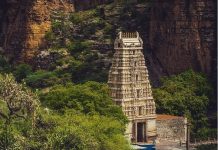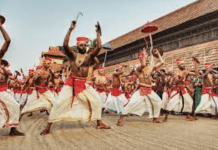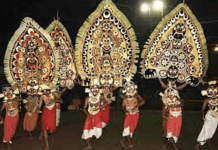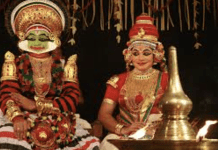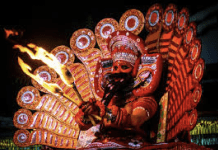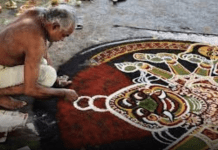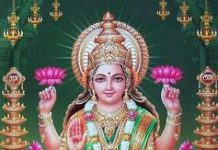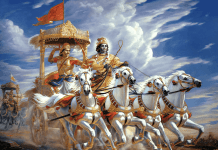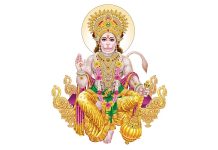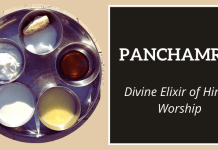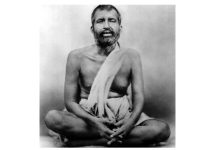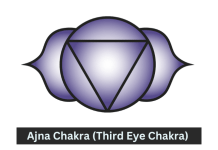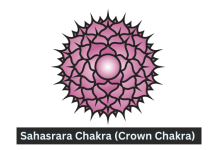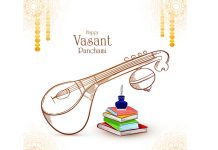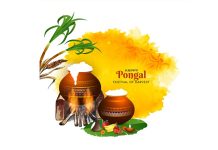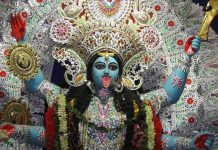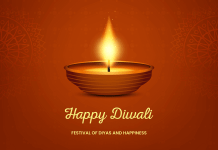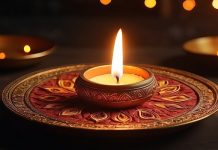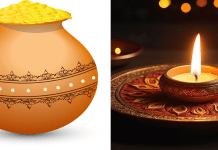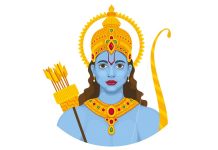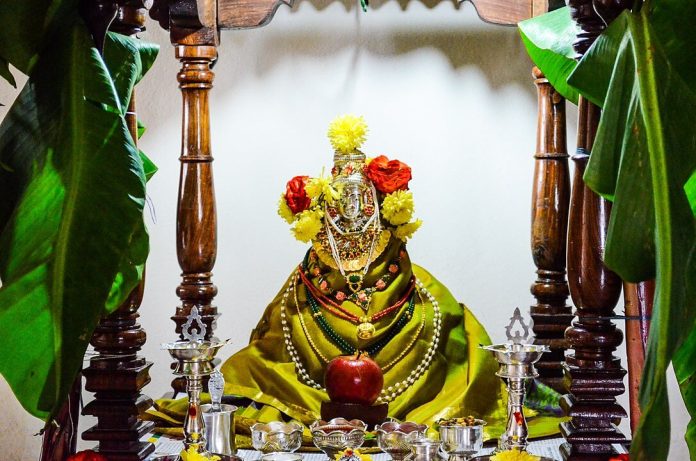
Varalakshmi Festival (also called as Varamahalakshmi pooja or Varalakshmi Vratam) is an annual Hindu festival is celebrated primarily in the southern states of India. This sacred occasion, dedicated to the goddess of wealth and prosperity, Mahalakshmi (goddess Lakshmi). Married women, known as sumangalis, perform the Varalakshmi Vratam is a sacred ritual seeking blessings for family well-being and invoking the grace of the Goddess of Wealth.
The Divine Connection of Varalakshmi Festival
Varalakshmi, a manifestation of the goddess Lakshmi, is the bestower of “varam,” or boons. Her benevolent presence in Hindu mythology and culture signifies abundance, wealth, and prosperity. Devotees believe that propitiating Goddess Lakshmi on this day is equivalent to worshipping the Ashtalakshmi – the eight aspects of Lakshmi, each representing a distinct form of wealth.
Varalakshmi Festival Timing and Significance
The Varalakshmi Festival is observed on the Friday preceding the full moon day (Purnima) in the Hindu month of Shravana, corresponding to the months of July and August in the Gregorian calendar. This timing, considered auspicious, enhances the significance of the occasion. As the monsoon season unfolds, the earth’s rejuvenation mirrors the devotees’ aspirations for spiritual renewal and material prosperity.
The Rituals and Celebrations of Varalakshmi Festival
Varalakshmi Festival is celebrated with elaborate rituals, each carrying profound symbolism and devotion. Women prepare meticulously for the pooja, decorating their homes with intricate rangoli designs and setting up the pooja room with reverence. The central element of the pooja is the Kalasham, representing the presence of Goddess Varalakshmi. This Kalasham is adorned with sacred items like mango leaves, flowers, rice, betel leaves, turmeric sticks, bananas, and coins. A coconut, a symbol of purity, is placed atop the Kalasham.
The pooja commences with women singing hymns and songs of devotion to welcome Goddess Varalakshmi into their homes. The lighting of lamps, the recitation of shlokas, and the offering of arati create a sacred ambiance filled with spiritual energy. The distribution of the yellow thread, which was tied around the kalasham, symbolizes the blessings received and the conclusion of the pooja. This thread, worn around the wrist, serves as a symbol of protection and connection to the divine.
The Story of Devotion of Varalakshmi Festival
The spiritual significance of Varalakshmi festival is further enriched by the stories that accompany it. One such tale speaks of the virtuous and compassionate Brahmin woman, Padmavati, who was graced by Goddess Lakshmi herself. The goddess instructed her to perform the Vratam to secure salvation. Another story revolves around Charumati, whose devotion and commitment led Lord Vishnu to instruct her to observe the pooja annually to attain the blessings of Goddess Lakshmi.
In conclusion, the Varalakshmi festival is not merely a festival; it is a bridge that connects devotees with the divine, and tradition with modernity. As married women come together to perform the pooja, they evoke the blessings of Goddess Varalakshmi, seeking prosperity, harmony, and fulfillment. The festival serves as a reminder that amidst the complexities of life, the pursuit of material and spiritual well-being remains intertwined. Through the Varalakshmi Vratam, the legacy of devotion and the spirit of unity continue to illuminate hearts, transcending time and generations.




